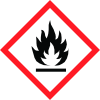3M(TM) Bondo Glazing & Spot Putty 907, 907C, 907ES, 907W, 937
3m company
Revision date : 2009-07-30

Note: Ingredients listed on restricted chemical lists
EC/CAS
84-74-2
Name of the chemical
Dibutyl phthalate
Concentration
1 - 5
General Information
Revision date
2009-07-30
Product name
3M(TM) Bondo Glazing & Spot Putty 907, 907C, 907ES, 907W, 937
Emergency telephone
(519) 451-2500 Ext. 2222
Icons in SDS
Company Information
Company name
3m company
GHS Information
Signal word
WARNING
Section 2
SECTION 2: Hazards identification
Critical Hazards: Flammable liquid and vapour. Dangerously reactive material; Avoid shock or friction. Moderate Eye Irritation: Signs/symptoms may include redness, swelling, pain, tearing, and blurred or hazy vision. Moderate Skin Irritation: Signs/symptoms can include localized redness, swelling, itching, and dryness. May be absorbed following inhalation and cause target organ effects. May be absorbed following ingestion and cause target organ effects. WARNING Contains a chemical which can cause cancer. (100-41-4) (IARC possible human carcinogen 2B) High exposures to xylenes in some animal studies have been reported to cause health effects on the developing embryo/fetus. These effects were often at levels toxic to the mother. The significance of these findings to humans has not been determined. DIBUTYL PHTHALATE (84-74-2) is a potential reproductive hazard causing embryotoxic, teratogenic and male reproductive effects by the oral route of exposure in laboratory animals. TALC (14807-96-6) has been shown to cause fibrosis of the lungs. Very toxic by inhalation. See Sections 7 and 11 for further information. -----------------------------------------------------------------------

